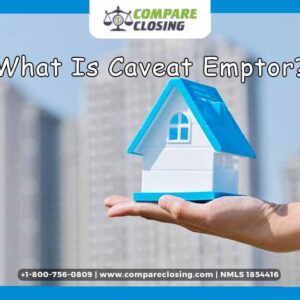Table of Contents
- What Are Netting Escrows & How Does It Work?: The Best Guide - January 2, 2024
- The Secret About Prescriptive Easement: Top Guide 1 Must Know - December 4, 2023
- About Home Equity Loans In Texas And How Can One Obtain It - November 27, 2023
Best Mortgage Loans
Buying a home is every American’s dream, finding the right property and choosing the best mortgage loans type is in itself tedious work.
As the borrower will be paying back their mortgage for a long period of time, it is important for them to find a loan that meets their requirement and budget.
While lending money the lender, makes a legal agreement for the borrower to repay that loan and interest over a set amount of time.
Let us first understand what is a mortgage? what are the types of mortgage loans? and identify the best mortgage loans as per our family needs and financial goal.
About Mortgage
All mortgage payments have two components to it the principal and interest. The principal means the loan amount.
Interest is the additional amount that the lender charges for the privilege of borrowing money that can be repaid over time, this interest is calculated as a percentage of the principal.
During a mortgage term, depending on an amortization schedule set by the lender the borrower pays in monthly installments.
The annual percentage rate (APR) is another factor involved in pricing a mortgage, the APR assesses the total cost of a loan, including the interest rate and other loan fees.
6 Different Types of Mortgage Loans
All mortgage products are not the same. Some have stricter qualifying terms than others. Some lenders demand a 20% down payment, while others qualify with as low as 3% of the home’s purchase price.
To qualify for some types of loans, the borrower needs stellar credit. Others are lenient toward borrowers with less-than-perfect credit.
The U.S. government doesn’t lend directly, but they do guarantee certain types of loans that meet stringent eligibility requirements for income, loan limits, and geographic areas. Let us look at the different possible mortgage loans.
I - Conventional Mortgages
Any borrowers who have a good credit score, a steady job with good income histories, and the ability to make a 3% down payment can usually qualify for a conventional loan that is backed by the two government-sponsored enterprises – Fannie Mae or Freddie Mac, who buy and sell most conventional mortgages in the United States of America.
Borrowers usually need to make a 20% down payment to avoid buying private mortgage insurance (PMI).
Conventional loans with low down payment requirements and no private mortgage insurance are offered by many lenders.
II - Conforming Mortgage Loans
Conforming loans are another mortgage loan type that is bound by maximum loan limits set by the federal government. These limits change as per the geographical area.
For this year, the Federal Housing Finance Agency set the baseline conforming loan limit (CLL) for single-unit properties at $548,250.
However, in certain parts of the country like New York City or San Francisco, the FHFA sets a higher maximum loan limit.
The reason being the home prices in these high-cost areas surpass the baseline loan limit by a minimum of 115% or more.
III - Nonconforming Mortgage Loans
Another mortgage loan type is a non-conforming loan that can’t be sold or bought by Fannie Mae and Freddie Mac, because of the loan amount or underwriting guidelines.
Jumbo loans are non-conforming loans. They’re so-called because the loan amounts exceed the conforming loan limits.
Lenders consider these types of loans as riskier, so larger cash reserves, must be shown by borrowers, they also should make a down payment of 20% or more, and have strong credit.
IV - Government-Insured Federal Housing Administration (FHA) Loans
Another mortgage loan type is FHA which is for the low-to-moderate-income buyers who are buying a house for the first time these loans are insured by the Federal Housing Administration (FHA).
The borrowers opt for these loans when they are unable to qualify for a conventional loan. For an FHA loan, the borrowers can put down a minimum of 3.5% of the home’s purchase price.
Compared to conventional loans the credit-score requirements are more relaxed in FHA loans. Even though FHA doesn’t lend money directly, they guarantee loans by FHA-approved lenders.
There is one disadvantage with FHA loans. The borrowers need to pay an upfront and annual mortgage insurance premium (MIP) which is a type of mortgage insurance that protects the lender in case of default by the borrower, these MIP need to be paid for the loan’s lifetime.
FHA loans are ideal for low-to-moderate-income borrowers who can’t qualify for a conventional loan and for those who cannot afford to put down a big down payment.
A FICO score of a minimum of 500 is allowed in FHA loans to qualify for a 10% down payment and if it is 580 then the borrower qualifies for a 3.5% down payment.
V - Government-insured Veterans Affairs (VA) Loans
Then comes another mortgage loan type that is the U.S. Department of Veterans Affairs (VA) which guarantees loans for qualified military service members, veterans, and their spouses.
Borrowers do not require to pay any down payment they can finance 100% of the loan amount. The VA loans also have smaller closing costs, better interest rates, and no requirement for PMI or MIP.
However, the borrower needs to pay a funding fee, which is a percentage of the loan amount that helps balance the cost to taxpayers.
The funding fee depends on the borrower’s military service category and on the loan amount. The payment of funding fee is exempted to the following service members:
- Those veterans who are receiving VA benefits for a service-related disability
- Those service members who qualify for VA compensation for a service-related disability if they didn’t receive retirement or active duty pay
- The surviving spouses of veterans who died in service or from a service-related disability
- A service member who has a pre-discharge claim with a proposed or memorandum rating stating eligibility for compensation
- Those veterans who received the Purple Heart.
VA loans are ideal for eligible active military personnel or veterans and their spouses who want the best terms and a mortgage product matching their financial needs.
VI - Government-Insured U.S. Department of Agriculture (USDA) Loans
The U.S. Department of Agriculture (USDA) is another mortgage loan type that guarantees loans for low-income buyers in rural areas nationwide.
Qualified borrowers for these loans need to make little or no down payment, as long as properties meet the USDA’s eligibility rules.
USDA loans are ideal for homebuyers in eligible rural areas who have lower household incomes, and no money for making down payments, who can’t qualify for a conventional loan product.
Along with the above-mentioned mortgage loan types, borrowers also need to consider the mortgage terms along with the length of repayment, which are the key factors in how the price of the loan and the interest rate will be determined by a lender.
I - Fixed-Rate Mortgages
Fixed-rate loans are a set interest rate for the life of the loan, that continues from 10 to 30 years.
If a borrower wants to pay off their home faster and can afford a higher monthly payment, then a shorter-term fixed-rate loan like 10, 15, or 20 years can help them shave off time and interest payments.
With these shorter terms, the borrower will also build equity in their home much faster.
When a borrower opts for a shorter fixed-term mortgage then the monthly payments will get higher than a longer-term loan.
A borrower needs to ensure that their budget can handle the higher payments. They may also need to consider other goals, like saving for retirement or an emergency fund.
For buyers who plan to stay put for many years, fixed-rate loans are ideal. A 30-year fixed loan might give the borrowers room to take care of their other financial needs.
If a borrower can take a little risk has the funds and discipline to pay off their mortgage faster, then a 15-year fixed loan can save them a considerable amount of interest and reduce their repayment period to half.
II - Adjustable-Rate Mortgages
Another popular mortgage term is adjustable-rate mortgages (ARMs) which have a fixed rate during the initial period of up to 10 years, and thereafter the rate could fluctuate as per the market conditions.
These loans are risky once the rate resets and if the borrower is unable to pay a higher monthly mortgage payment.
Some ARM loans have a rate cap declaring that the monthly mortgage payment cannot exceed a specific amount.
A borrower cannot count on being able to sell their home or refinance the mortgage before their ARM resets because of market conditions—and the borrower’s finances could change.
If the borrower doesn’t plan to stay in the home beyond the initial fixed-rate period or if they intend to refinance before the loan resets then ARMs are a good option.
As the interest rates for ARMs are lower during the initial years of repayment, a borrower may be able to save thousands of dollars on interest during the initial years of homeownership.
Conclusion
A mortgage principal, which is the loan amount, and the interest charged on that principal are the two main parts of a mortgage.
Even if the U.S. government does not function as a mortgage lender, they guarantee a few mortgage loans.
In the U.S.A conventional, conforming, non-conforming, Federal Housing Administration-insured, U.S. Department of Veterans Affairs-insured, and U.S. Department of Agriculture-insured are the six main types of mortgages.
Amanda Byford
Amanda Byford has bought and sold many houses in the past fifteen years and is actively managing an income property portfolio consisting of multi-family properties. During the buying and selling of these properties, she has gone through several different mortgage loan transactions. This experience and knowledge have helped her develop an avenue to guide consumers to their best available option by comparing lenders through the Compare Closing business.





